DRIVE (Day 5 - part 2)
We continued on our drive from Lincoln and started to pass through Capitan. Much to our delight, there was a Smokey Bear Historical Park... so of course we stopped.

Capitan (with a population or around 1,400) was created in 1900 at the end of a railroad line built to access the Salado coal fields. Unfortunately the coal mines were abandoned a year later.
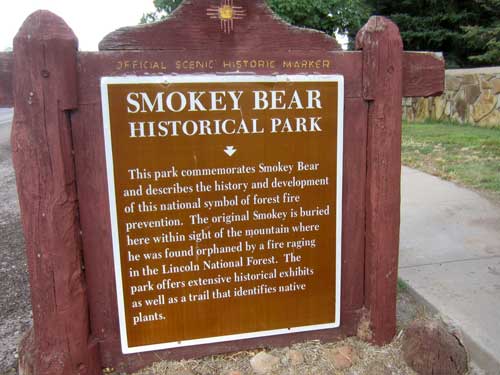
We first visited the museum and gift shop, then went next door the the actual park.
The park began with the log cabin museum in 1960. A Memorial Park was added in 1976 to provide a final resting place for Smokey. The state park was made official in 1979.

Museum and gift shop

It was filled with hundreds, if not thousands, of Smokey memorabilia... extending all the way back to the 1940's.






The park consisted of a building full of Smokey history (including a movie) as well as an outside garden.

It first started with World War II...
Lumber was almost important as ammunition at that time. With most of the men off fighting the war, there were fewer at home to fight forest fires. A few months after the attack on Pearl Harbor, the concept of forest protection escalated when enemy shelling occurred near the Los Padres National Forest off the coast of southern California. Japan later also tried to use wildfires as a weapon by launching fire balloons into the jet stream in an attempt to start coastal fires in Oregon.
With the hopes of increasing public awareness and involving the local communities in the war effort, the Cooperative Forest Fire Project was formed in 1944. They began using colorful posters to educate Americans about the dangers of forest fires.
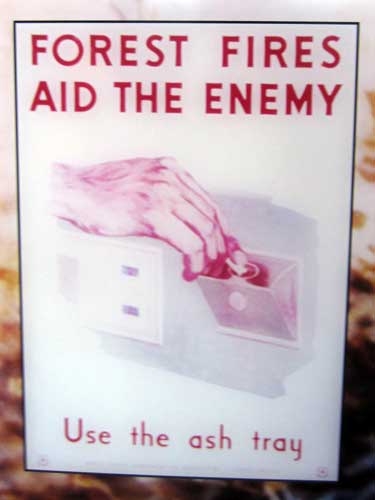

In 1942, Disney's Bambi premiered in New York City and Walt Disney allowed his characters to appear in the fire prevention campaigns. They were very popular but since they were only on temporary loan, another animal needed to be found. Many forest-dwelling creatures were suggested... squirrels, owls, chipmunks... but it was eventually decided that a larger animal was needed, one that could actually put out a fire by itself. A bear! His name was inspired by Joe Martin, a New York City Fire Department hero who suffered burns during a bold 1922 rescue. And so the image of Smokey Bear was born. The first posters appeared in 1944.
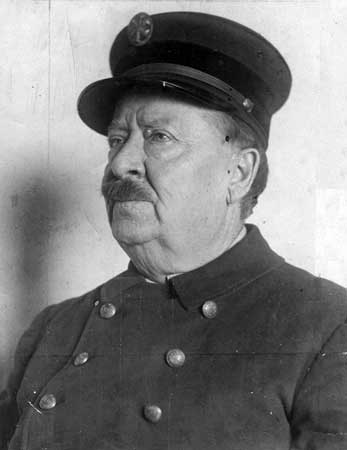
Joseph B. "Smoky" Martin (1862 - 1941)

Squirrels were cute...

... but a bear was powerful!
The spring of 1950 was drier than normal. Two separate human caused fired broke out near Capitan Gap in the Lincoln National Forest. Fanned by strong winds, the fires ranged out of control for days, destroying some 17,000 acres of forest and grassland.
an American black bear cub was spotted dangerously close to the fire line. He was clinging to a tree and his paws and hind legs were badly burned. Fire crews rescued him and he was treated for several weeks for his burns. The tiny 2 1/2 month old, 5 pound cub was at first given the name of Hotfoot Teddy. But quickly it was decided to call him Smokey after the posters.

The results of the fire


The tiny cub gets treated for his burns.


The drawings on the poster have now come to life.

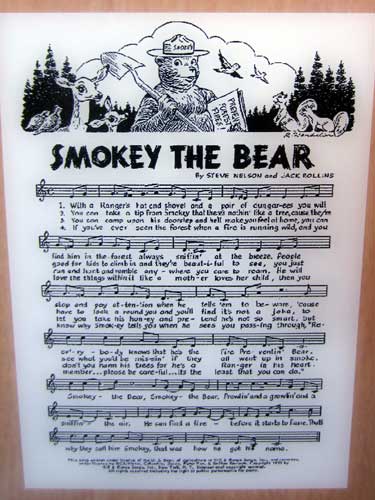
In 1952, Steve Nelson and Jack Rollins wrote a song named "Smokey the Bear". Even though his name was Smokey Bear, the "the" was added to keep the song's rhythm. So even though many of us know him as Smokey the Bear, he’s officially still Smokey Bear. Smokey's name, however, was always spelled differently from the adjective 'smoky' since the beginning.
After he had recovered, he was flown to the National Zoo in Washington D.C. where he grew into a full-sized bear... unfortunately a somewhat unhappy, solitary full-sized bear. Back then, zoos were much more focused on 'displaying' an animal for public viewing and entertainment... not so much on the comfort or safety of the animal itself.



The real Smokey hardly got such freedom in the forest (burned or not) as the posters liked to depict.


To see a short film made in 1953 of Smokey's story narrated by Hopalong Cassidy, click on the photo.
In 1962, Goldie (a golden-colored, orphaned black bear) was sent to the National Zoo to join Smokey. She was a very gentle bear and lived at the zoo until she died in 1977. Unfortunately the two bears never had any cubs. So in 1971, the zoo added Little Smokey, another orphaned bear cub from Lincoln National Forest, to their cage... announcing that the pair had "adopted" the cub.


Smokey and Goldie
After 25 years (around 70 in equivalent human years), Smokey retired from his role as living mascot in 1975 and the title of Smokey Bear II went to Little Smokey.
Smokey eventually died of old age in his sleep in 1976 at the ripe old age of 26 (the average lifespan in wild is 20 - 25 years). He was returned here and buried at 3 am at night so no on could steal or vandalize the body.
Little Smokey died in 1990. No more live bear mascots have been used since.

Smokey Bear II enjoys honey and berries that are dispensed from a new automated dispensing tree. The "honey tree" was added in the summer of 1984 as part of the 40 year anniversary celebration.
Many other countries around the world have since adopted fire-prevention mascots.

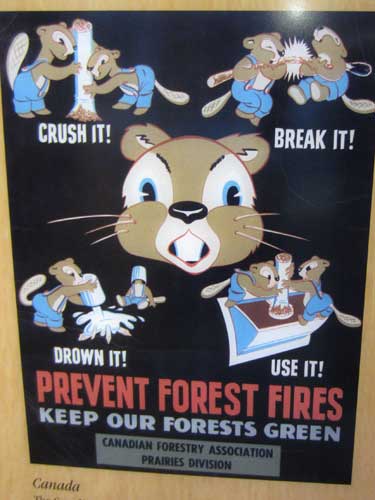
We then walked around the gardens outside to visit Smokey's grave. The area was divided up into different vegetative life zones, as defined by the dominant plant species in that area.


A wonderful range all the way from deserts to pine forests
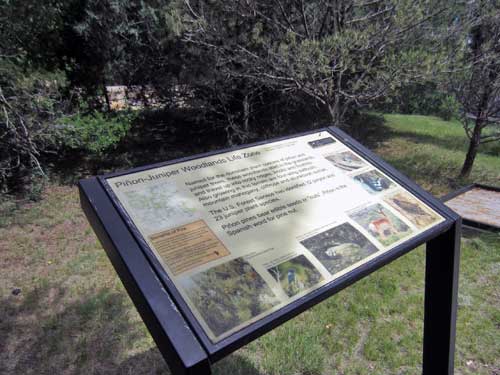
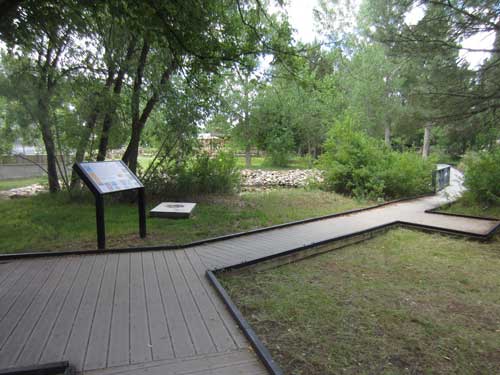

Smokey's final resting place


return • continue

